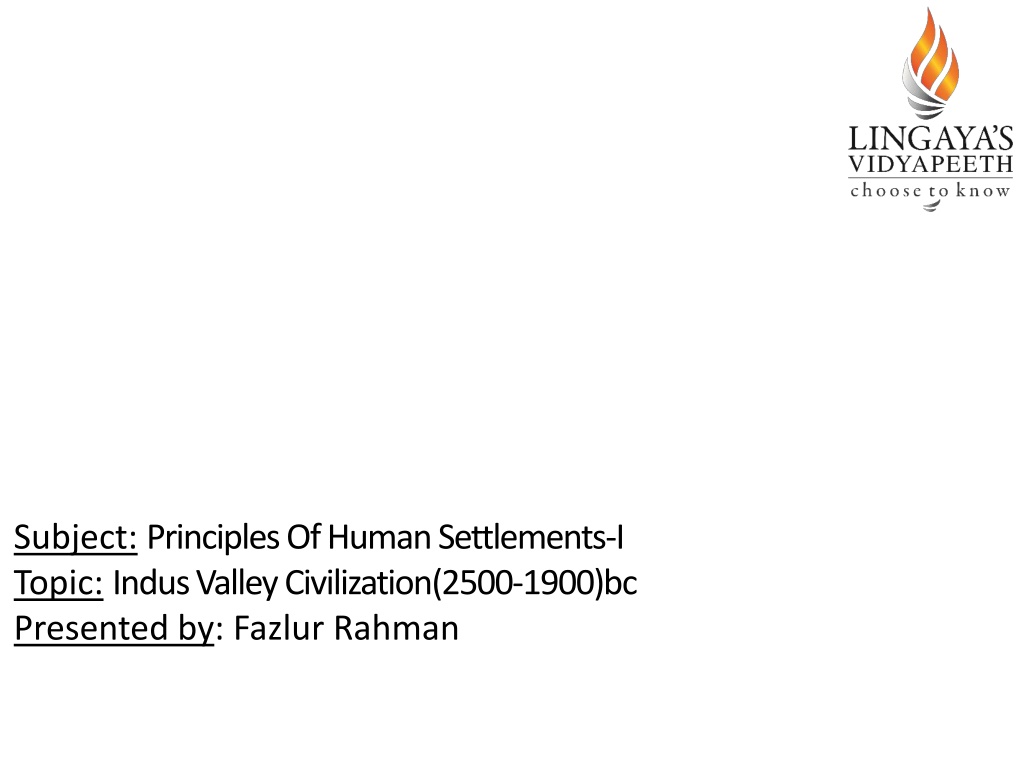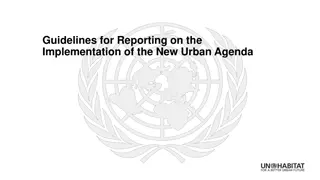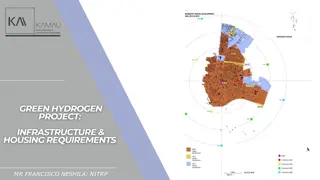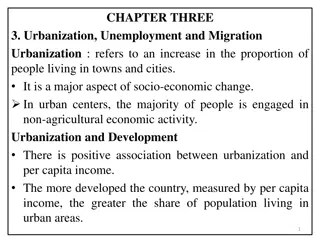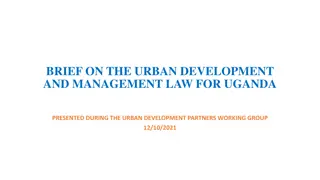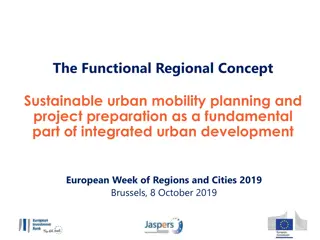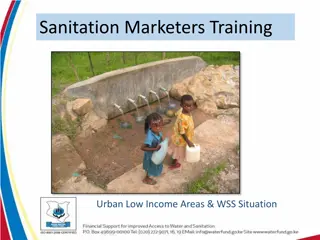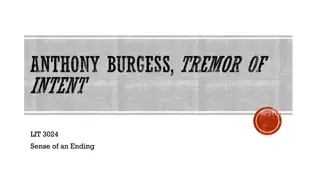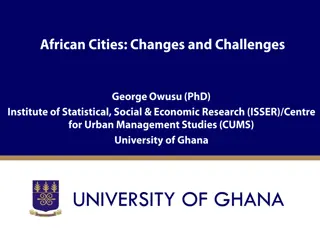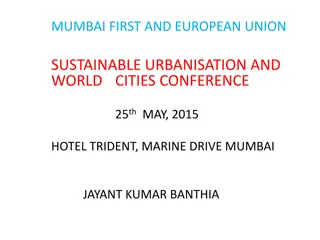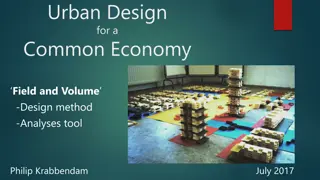Urban Development Models: Burgess and Hoyt
The Burgess concentric ring model and Hoyt sector model are key frameworks explaining urban social structures. Burgess's model illustrates urban land use in rings around the CBD, while Hoyt's model emphasizes outward growth along transportation arteries. Criticisms include applicability limitations in modern urban contexts.
Download Presentation

Please find below an Image/Link to download the presentation.
The content on the website is provided AS IS for your information and personal use only. It may not be sold, licensed, or shared on other websites without obtaining consent from the author. Download presentation by click this link. If you encounter any issues during the download, it is possible that the publisher has removed the file from their server.
E N D
Presentation Transcript
Subject: Principles Of Human Settlements-I Topic: Indus Valley Civilization(2500-1900)bc Presented by: Fazlur Rahman
The Concentric ring model also known as the Burgess model is one of the earliest theoretical models to explain urban social structures. It was created by Sociologist Ernest Burgess in 1925. Based on Human ecology theories done by Burgess and applied on Chicago, it was the first to give the explanation of distribution of social groups within urban area. This concentric ring model depicts urban land use in concentric rings: the Central Business District (or CBD) was in the middle of the model, and the city expanded in rings with different land uses.
Burgess often observed that there was a correlation between the distance from the CBD and the wealth of the inhabited area; wealthier families tended to live much further away from the Central Business District. As the city grew, he observed that the CBD would expand outwards The zones identified are: The center was the CBD The transition zone of mixed residential and commercial uses Low-class residential homes (inner suburbs) Better quality middle-class homes (Outer Suburbs) Commuters zone It is effectively an urban version of Von Thunen s regional land use model developed a century earlier. It contrasts with Homer Hoyt s Sector Model and the multiple nuclei model. Criticisms The model has been challenged by many contemporary urban geographers. First, the model does not work well with cities outside the United States, in developed under different historical contexts. It assumes an isotropic plain - an even, unchanging landscape Physical features Decentralization of shops etc. Urban regeneration and gentrification - more expensive property can be found in 'low class' housing areas. The model does not fit polycentric cities, for example Stoke-on-trent.
The sector model, also known as the Hoyt model, is a model of urban land use proposed in 1939 by economist Homer Hoyt . It is a modification of the Concentric zone model of city development. The benefits of the application of this model include the fact it allows for an outward progression of growth. As with all simple models of complex phenomena its validity is limited.
Explanation While accepting the existence of a central business district, Hoyt suggested that zones expand outward from the city center along railroads,highways,and other transportation arteries. Using Chicago as an example, an upper class residential sector evolved outward along the desirable Lake Michigan shoreline north of the central business district, while industry extended southward in sectors that followed railroad lines. In developing this model Hoyt observed that it was common for low-income households to be near railroad lines, and commercial establishments to be along business thoroughfares. Recognizing that the various transportation routes into an urban area, including railroads, sea ports, and tram lines, represented greater access, Hoyt theorized that cities tended to grow in wedge-shaped patterns -- or sectors -- emanating from the central business district and centered on major transportation routes Higher levels of access meant higher land values, thus, many commercial functions would remain in the CBD but manufacturing functions would develop in a wedge surrounding transportation routes. Residential functions would grow in wedge-shaped patterns with a sector of low-income house bordering manufacturing/industrial sectors (traffic, noise, and pollution makes these areas the least desirable) while sectors of middle- and high-income households were located furthest away from these functions. Hoyt's model attempts to state a broad principle of urban organization. Limitations The theory is based on early twentieth century transport and does not make allowances for private cars that enable commuting from cheaper land outside city boundaries. This occurred in Calgary in the 1930s when many near-slums were established outside the city but close to the termini of the street car lines. These are now incorporated into the city boundary but are pockets of low cost housing in medium cost areas. Physical features - physical features may restrict or direct growth along certain wedges The growth of a sector can be limited by leapfrog land use
an ecological model put forth by Chauncy Harris and Edward Ullman in the 1945 article "The Nature of Cities." a city may have started with a central business district, similar industries with common land use and financial requirements are established near each other. increase of movement allows for the specialization of regional centers. no clear CBD (Central Business District) in this type of model.
Model by Graham and Marvin (1996) Graphic conceptualisation of global cities in post-industrial times Breaks the classic scheme of the compact city.
Model by AMENDOLA 2000 Depicts the city as a huge theme park Specialized parts take the name of a story, Disney like.
Walter christaller 1933 Recognition of economic relationships between cities and their hinterlands Central place exists to provide goods and services to the sorrounding population. City acts as a distribution centre. There are 5 sizes of communities regional capital, city, town, village, hamlet. Often small hamlets in rural areas act as main centres for commercial activities.
THE GROWTH POLE THEORY Economic growth is not uniform over an entire region,takes place around a specific pole. Pole is a key industry around which linked industries develop. Transportation plays an important in such a pattern of growth. At a later stage growth of a secondary pole is possible.
Harveys model of CIRCULATION OF CAPITAL International Journal of Urban and Regional research (d.harvey) Economic base and political superstructure City form and function reflects power held by capital
